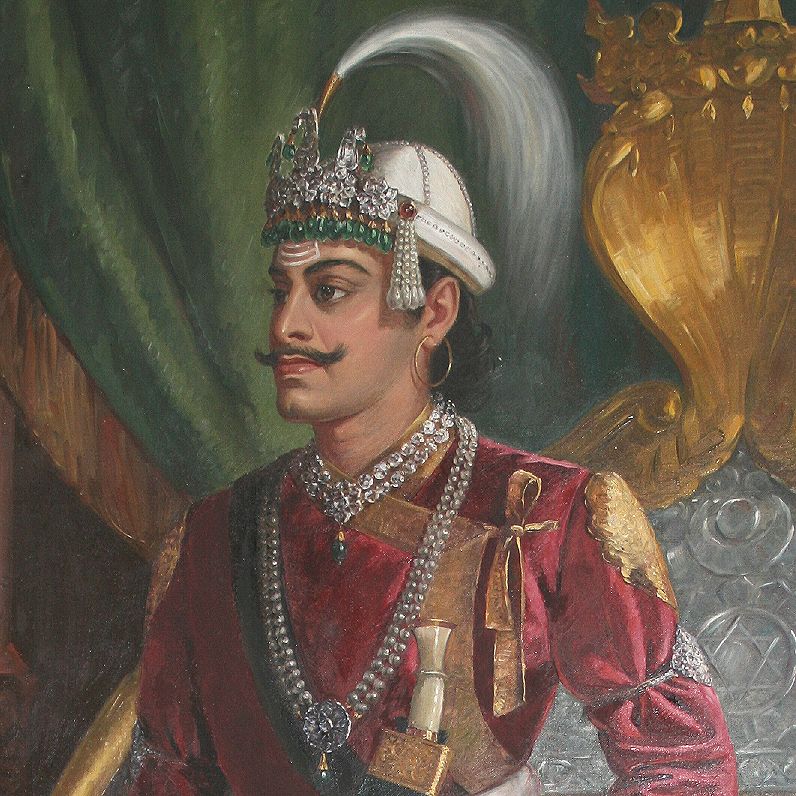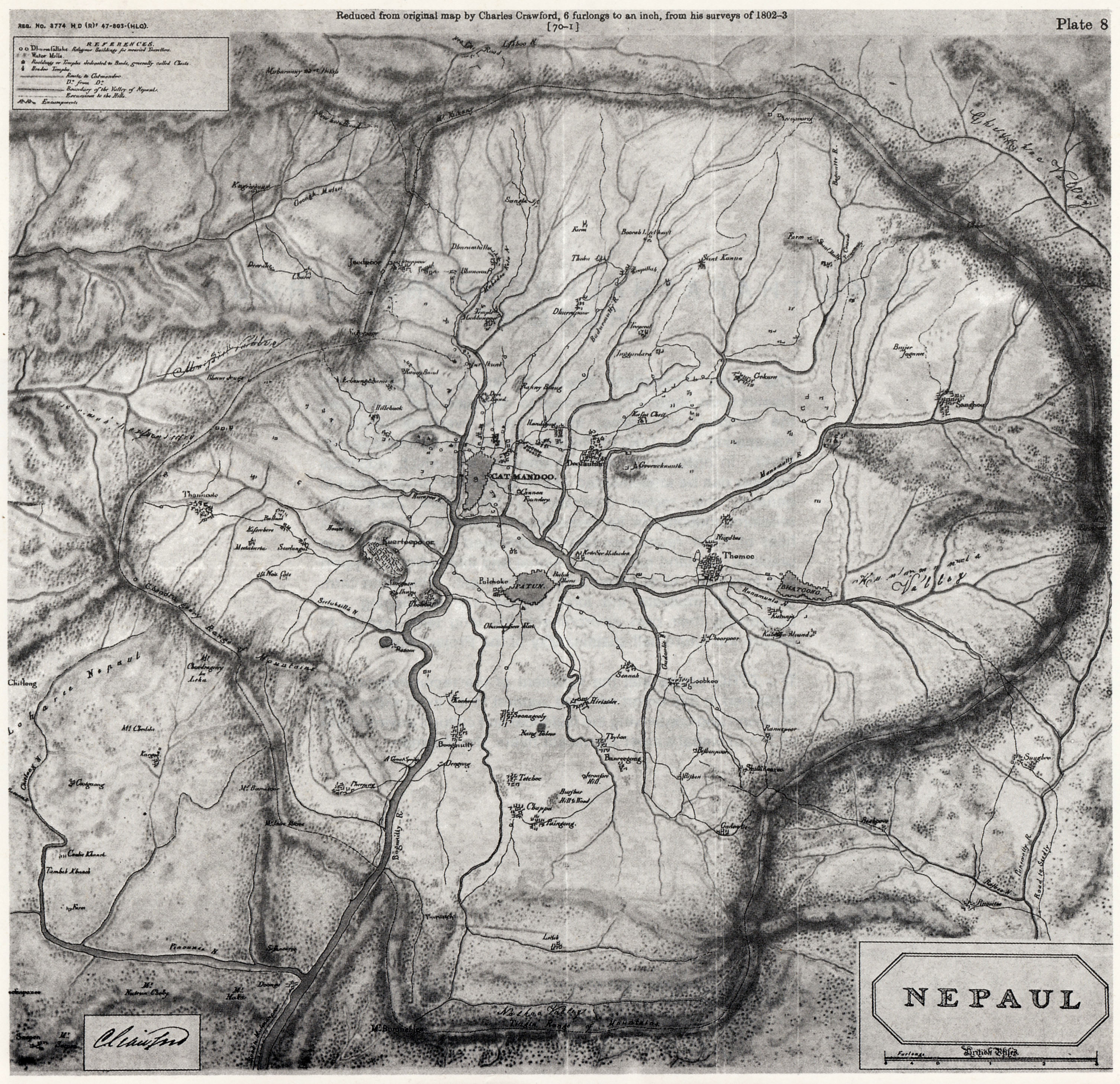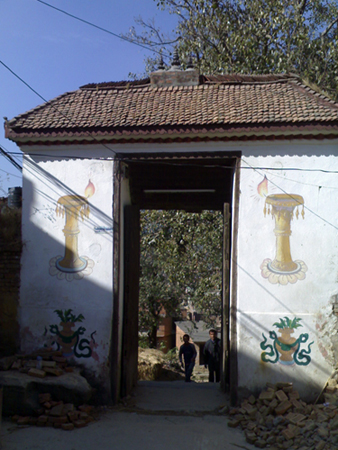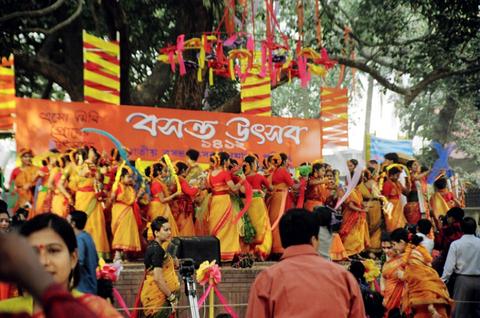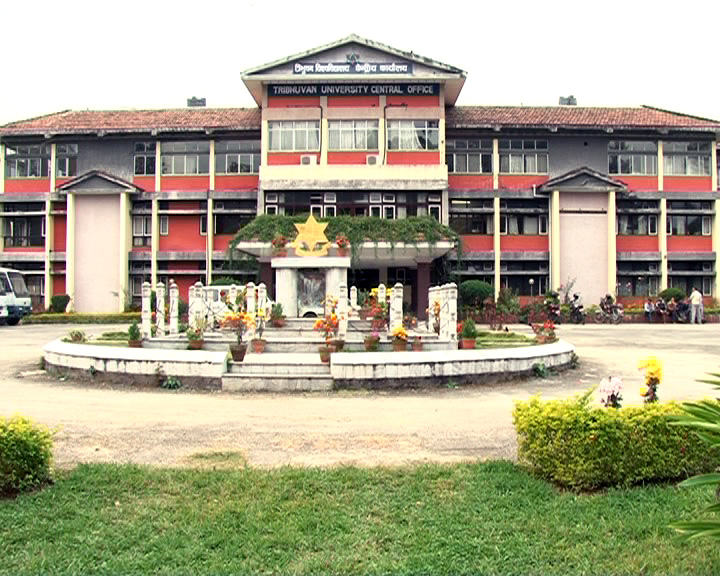|
Swarup Singh Karki
Swarup Singh Karki ( ne, स्वरूप सिंह कार्की) or Swaroop Singh Karki, was a Nepali politician, courtier, military commander and minister. He was popular for his singing prowess and court conspiracies. He was selected as Dewan (prime minister) in the reign of King Pratap Singh Shah and a significant politician in the regent rule of Queen Rajendra of Nepal. He was one of the most influential court politician in the rule of King Pratap Singh and Queen Rajendralaxmi others being his rival Bahadur Shah of Nepal and Vamsharaj Pande. Vamsharaj was his perceived career rival. His life and career ended when Prince Bahadur Shah was appointed as regent in 1785. Early life He was born in 1808 B.S. He belonged to Chaudandi state of Sen Kings in the Eastern Nepal. He was Chhetri (mudulla karki) by ethnicity and was employed under King Karna Sen of Chaudandi. He later took asylum under Prithvi Narayan Shah after the conquest of Kathmandu and Patan by Gorkha due ... [...More Info...] [...Related Items...] OR: [Wikipedia] [Google] [Baidu] |
Dewan
''Dewan'' (also known as ''diwan'', sometimes spelled ''devan'' or ''divan'') designated a powerful government official, minister, or ruler. A ''dewan'' was the head of a state institution of the same name (see Divan). Diwans belonged to the elite families in the history of Mughal and post-Mughal India and held high posts within the government. Etymology The word is Persian in origin and was loaned into Arabic. The original meaning was "bundle (of written sheets)", hence "book", especially "book of accounts," and hence "office of accounts," "custom house," "council chamber". The meaning of the word, '' divan'' "long, cushioned seat" is due to such seats having been found along the walls in Middle Eastern council chambers. It is a common surname among Sikhs in Punjab. Council The word first appears under the Caliphate of Omar I (A.D. 634–644). As the Caliphate state became more complicated, the term was extended over all the government bureaus. The ''divan of the Subli ... [...More Info...] [...Related Items...] OR: [Wikipedia] [Google] [Baidu] |
Battle Of Lalitpur
The Battle of Lalitpur in 1768 ended with the Gorkha conquest of Lalitpur, one of the three kingdoms in Nepal centered in the Kathmandu Valley, and the loss of the rule of the native Newars. Exhausted by a prolonged siege and much bloody fighting, the Newars surrendered when the Gorkhalis threatened to cut off their noses, like during the Battle of Kirtipur, and also their right arms. The victors then entered the city and plundered it. They killed all the nobles and important men. They also dismantled the royal palace and looted the houses of the rich inhabitants and even the temples. The Six Pradhans Patan was ruled by the six ''bhardar''/kshatriya noble Pradhan brothers - Kaji Dhanwanta Singh, Kaji Bhinkhyal Singh, Kaji Sinkhyal Singh, Kaji Chaku Bahal Singh, Kaji Kalidas Singh, Kaji Dhanjkaji Singh - who ruled as the ''de facto'' Lords (termed ''Kajis'') of Patan who were very powerful. They were rather intelligent and sharp in politics and were collectively called the “ ... [...More Info...] [...Related Items...] OR: [Wikipedia] [Google] [Baidu] |
Kingdom Of Nepal
The Kingdom of Nepal ( ne, नेपाल अधिराज्य), also known as the Gorkha Empire ( ne, गोरखा अधिराज्य) or Asal Hindustan ( ne, असल हिन्दुस्तान)(), was a Hindu kingdom in South Asia, formed in 1768, by the unification of Nepal. Founded by King Prithvi Narayan Shah, a Gorkha monarch who claimed to be of Khas Thakuri origin, it existed for 240 years until the abolition of the Nepalese monarchy in 2008. During this period, Nepal was formally under the rule of the Shah dynasty, which exercised varying degrees of power during the kingdom's existence. After the invasion of Tibet and plundering of Digarcha by Nepali forces under Prince Regent Bahadur Shah in 1792, the Dalai Lama and Chinese Ambans reported to the Chinese administration for military support. The Chinese and Tibetan forces under Fuk'anggan attacked Nepal but went for negotiations after failure at Nuwakot. ''Mulkaji'' Damodar Pande, wh ... [...More Info...] [...Related Items...] OR: [Wikipedia] [Google] [Baidu] |
Kalu Pande
Vamshidhar Pande ( ne, वंशीधर पाँडे) known by Alias Kalu Pande ( ne, कालु पाँडे) was a Nepalese politician and military general who was appointed as Kaji of The Gorkha Kingdom. He was born in 1713 A.D. in Gorkha. He was the commander of the Gorkhali forces during the Unification Campaign of Nepal who died in the first Battle of Kirtipur in 1757 A.D. Pande's real name was Banshidhar Pande. He was a son of ''Kaji'' Bhimraj Pande who was minister during reign of King Prithivipati Shah of Gorkha. He was descendant of Minister of Gorkha and Dravya Shah's accomplice Ganesh Pande. He had three sons: ''Dewan Kajisaheb'' Vamsharaj Pande, Sardar Ranasur Pande and ''Mulkaji Sahib'' Damodar Pande (1st PM of Nepal). Family Pande was born in 1713 A.D to ''Kaji Bhimraj Pande''. He was a descendant of Ganesh Pande, who was the first Kaji (Prime Minister) of King Dravya Shah of Gorkha Kingdom established in 1559 A.D. The Pandes were considered as T ... [...More Info...] [...Related Items...] OR: [Wikipedia] [Google] [Baidu] |
Saptari District
Saptari ( ne, सप्तरी जिल्ला}), a part of Madhesh Province, is one of the seventy-seven districts of Nepal. Its district headquarter is Rajbiraj. Saptari is an Outer Terai district. This district covers an area of and has a population (2011) of 639,284Household and population by districts, Central Bureau of Statistics (CBS) Nepal which makes it the 10th most populated district of Nepal. Saptari is renowned for its agricultural output, and is bordered on the east by the massive Sapta Koshi river. There are nine [...More Info...] [...Related Items...] OR: [Wikipedia] [Google] [Baidu] |
Bhadra
''Bhadra''Feminine: sa, भद्रा, Bhadrā is a Sanskrit word meaning 'good', 'fortune' or 'auspicious'. It is also the name of many men, women and objects in Hindu mythology. Male Figures King of Chedi Bhadra was a king of Chedi Kingdom who participated in the Kurukshetra War from the side of the Pandavas. He was killed by the warrior Karna. Grandson of Manu The first man Svayambhuva Manu and his Shatarupa had a daughter named Shraddha. Bhadra was one of her twelve sons. Yaksha Bhadra was also the name of a Yaksha who served their king, Kubera. Due to a curse of sage Gautama, he was born as a lion. Krishna's son The god Krishna married the river goddess Kalindi and had 10 sons. Bhadra was one of them. Sage Bhadra was a renowned Maharishi. He was the son of Pramati and the father of Upamanyu. Female Figures Bhadrakali Bhadrā or Bhadrakālī is one of the fierce forms of the Supreme Goddess Devi. Kubera's wife Bhadrā is the queen of Yakshas. She was the daughter ... [...More Info...] [...Related Items...] OR: [Wikipedia] [Google] [Baidu] |
Pande Family (Nepal)
The Pande family or Pande dynasty (Also spelled as Pandey or Panday) ( ne, पाँडे वंश/पाँडे काजी खलक; or ) was a Rajput Chhetri political family that directly ruled Nepali administration affairs since the 16th century to 19th century as Mulkaji and Mukhtiyar (Prime Minister). This dynasty/family was one of the four noble family to be involved in active politics of Nepal together with Shah dynasty, Basnyat family and Thapa dynasty before rise of Rana dynasty. Pande dynasty is the oldest noble family to hold the title of Kaji. This family was decimated from political power in 1843 CE from the political massacre conducted by Prime Minister Mathabar Singh Thapa as a revenge for his uncle Bhimsen's death in 1839. The family is descended from nobleman Ganesh Pande of the Gorkha Kingdom. Kalu Pande and Tularam Pande were descendants of Ganesh Pande. Pande dynasty and Thapa dynasty were the two chief political families who alternatively conte ... [...More Info...] [...Related Items...] OR: [Wikipedia] [Google] [Baidu] |
Falgun
Falgun or Phalgun (; ne, फाल्गुण) or Phagun ( as, ফাগুন) is the eleventh month of the year in the Bengali calendar, the Assamese calendar, and the Nepali calendar. In the revision of the Bengali calendar used in Bangladesh since October 2019, the month has 29 days in common years or 30 in leap years of the Gregorian calendar. In the previous version of the calendar, used in Bangladesh from 1987 through October 2019, Falgun had 30 days in common years or 31 days in leap years. The month has 29 or 30 days, based on the true movements of the Sun, in the old non-reformed Bengali calendar, still used in West Bengal, and in the Nepali calendar. Falgun was named for the ''nakshatra'' (lunar mansion) ''Uttara phalguni'', in the vicinity of which the full moon appears at that time of the year. It marks the arrival of spring, the sixth and final season in Bangladesh, West Bengal, Assam, and Nepal. Falgun falls between mid-February and mid-March on the Gregorian cale ... [...More Info...] [...Related Items...] OR: [Wikipedia] [Google] [Baidu] |
Amar Singh Thapa
Amar Singh Thapa Chhetri distinguished as Badakaji Amar Singh Thapa( ne, बडाकाजी अमर सिंह थापा क्षेत्री), or Amar Singh Thapa The Elder, (also spelled Ambar Simha) also known by the honorific name Bada Kaji ("Senior Kaji") or Budha Kaji ("The Old Kaji"), was a Gorkhali military general, governor and warlord in the Kingdom of Nepal. He was the overall commander of the Nepal Army in the conquest of Western Provinces and authoritative ruler of Kumaon, Garhwal in the Kingdom of Nepal. He was referred by the King of Nepal to have been deployed as Mukhtiyar (equivalent to Prime Minister) of Western Provinces of Kumaon, Garhwal He is often hailed as Living Tiger of Nepal ( ne, ज्यूँदो बाघ; ''jyūm̐do bāgha'') and he was posthumously regarded as one of the national heroes of Nepal, who led the Anglo-Nepalese War for the Gorkhali Army. Amarsingh Chowk Pokhara and Shree Amarsingh Model Higher Secondary School are ... [...More Info...] [...Related Items...] OR: [Wikipedia] [Google] [Baidu] |
Abhiman Singh Basnyat
Abhiman Singh Basnet/Basnyat ( ne, अभिमान सिंह बस्न्यात) was first Commander-in-Chief of Unified Nepal."Regmi Research Series" Author:Mahesh Chandra Regmi Abhiman Singh became the first Commander in Chief of a United Nepal after General Kalu Pande died during his second attempt to capture Kirtipur. He had participated in invasion of Makawanpur during Unification of Nepal. He commanded battles in Sino-Nepalese War as subordinate commander under Chautariya Shree Krishna Shah. He commanded and annexed Tanahun Kingdom into unified Nepal. In 1794 AD, King Rana Bahadur Shah dissolved government to overthrow Bahadur Shah of Nepal. Kirtiman was appointed as Chief (''Mul'') Kaji among the four Kajis succeeding Abhiman Singh. In 1857 B.S., he was sent to settle the area of the Kirata regional areas comprising; Pallo Kirant Limbuwan , Majh Kirant Khambuwan and Wallo Kirant , then called Kaala Banzaar. It was a great injustice to him to being sent to th ... [...More Info...] [...Related Items...] OR: [Wikipedia] [Google] [Baidu] |
Dal Mardan Shah
Dal Mardan Shah (?–?) was the king of the Malla state of Patan in Nepal (r. 1764-1765). He was the son of Nara Bhupal Shah and the younger brother of Prithvi Narayan Shah Maharajadhiraj Prithvi Narayan Shah (1723–1775) ( ne, श्री ५ बडामहाराजाधिराज पृथ्वीनारायण शाह देव) was the last ruler of the Gorkha Kingdom and first monarch of the .... References Gurkhas Nepalese Hindus {{Asia-royal-stub ... [...More Info...] [...Related Items...] OR: [Wikipedia] [Google] [Baidu] |
Tribhuwan University
Tribhuvan University (TU; ne, त्रिभुवन विश्वविद्यालय) is a public university located in Kirtipur, Kathmandu. Established in 1959, TU is the oldest university in Nepal. In terms of enrollment, it is the 12th largest university in the world. The college offers 1000 undergraduate and 500 postgraduate programs across a wide range of disciplines. Additionally, the institution has 30 constituent campuses and over 600 affiliated colleges across the country. Because it is government-funded, the tuition fees are less expensive than those of private (affiliated) college campuses. History Established on 25 June 1959 (or 11 Ashar 2016 BS), Tribhuvan University is the oldest and largest university in Nepal. The university was named after the late King Tribhuvan. In its early years, all the postgraduate classes were held at Tripureshwor Campus. The administrative office was also located in Tripureshwor. It was only in 1967 that the university wa ... [...More Info...] [...Related Items...] OR: [Wikipedia] [Google] [Baidu] |
